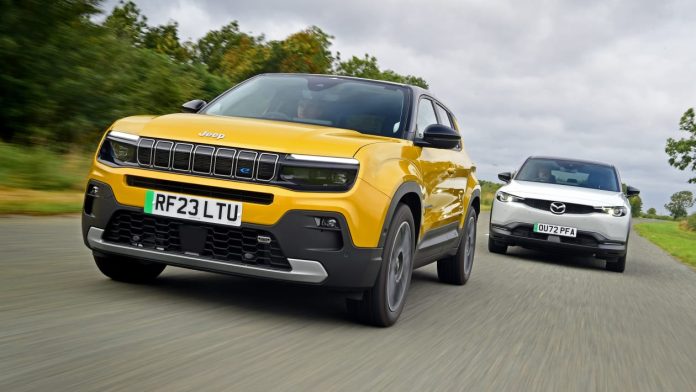The MX-30’s low-speed ride is on the firm side when compared with the Avenger’s, even though the Jeep is fitted with slightly lower-profile tyres on similarly sized 18-inch wheels.
A & B-roads: Pick up the pace, and the firm edge to the MX-30’s ride translates into better body control than the Jeep in corners, where it feels more stable. This stiffer set-up means the Mazda is more engaging to drive, but it comes at the expense of the car’s ride, which is firm at all speeds.
Put your foot down, and the MX-30’s electric motor tends to build pace rather than give you a shove in the back like some other EV set-ups – including the Avenger here when it’s in Sport mode. At least that means the range isn’t impacted too hard every time you floor the throttle.
As with the Jeep, there’s energy recuperation on offer, which is controlled via paddles behind the MX-30’s steering wheel. However, the system is counter-intuitive, with the ‘+’ setting offering two levels of coasting, and ‘–’ boosting energy recovery. The latter isn’t as strong as Jeep’s ‘B’ mode, though.
Motorway: The MX-30 is well behaved at higher speeds, although you will see a drop in range the faster you go. A top speed of just 87mph makes it harder to deplete the battery, though.
Ownership
Before you climb aboard the MX-30, you need to negotiate its other significant talking point – the doors. The front ones are conventional, although they can be opened to a 90-degree angle to boost access to the front seats. However, it’s the rear ‘half doors’ that are of greater interest.









